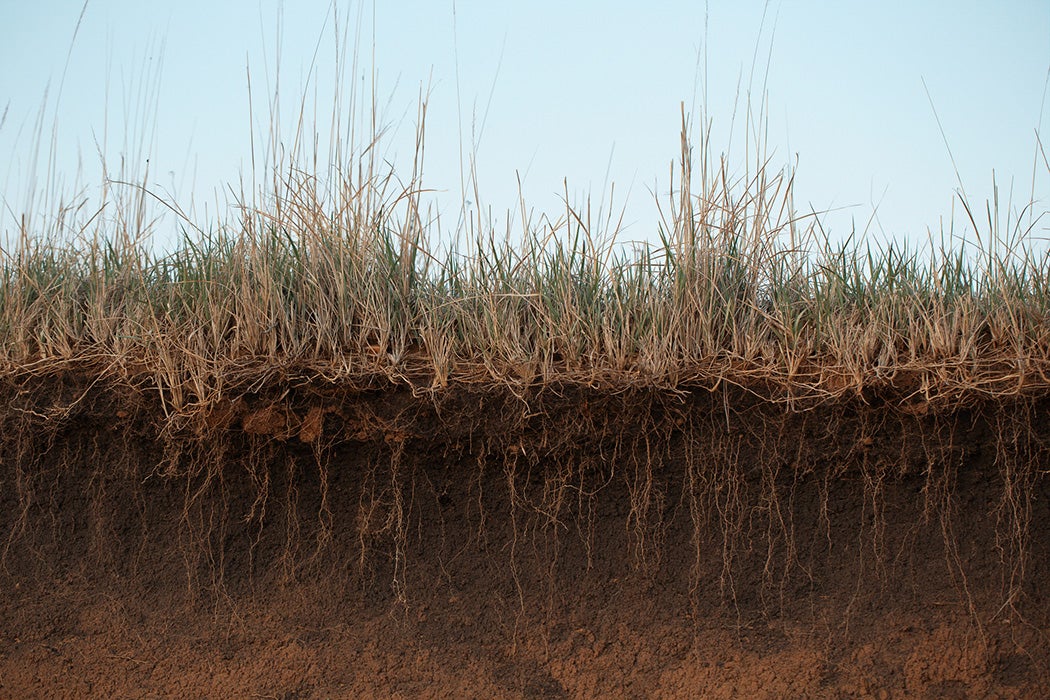For most of us, soil is at best a somewhat wondrous vessel or platform for plants to put down roots so that they can bloom or provide us fresh produce. More often than not, it’s a bit of a pest—usually in the wrong place at the wrong time and in need of removal from our home or selves.
But to hear soil scientists talk of it, as sociologist Céline Granjou and anthropologist Juan Francisco Salazar do in a 2019 Nature and Culture article, soil is nearly as alive as we or the worm or the bug that meanders through it, and it’s overdue for recognition as such. From conversations with soil and climate scientists, Granjou and Salazar outline a more capacious theory for recognizing soil’s capacity to act and induce change beyond the nursery on an environmental and climatic scale, as well as the current limitations to our common conceptions of soil.
As characterized by the soil scientists, soil is far from being “an inert subsurface” and is teeming with life that is “crucial for the flourishing of aboveground life.” The existence of soil and the critters in it are mutually dependent and constitutive of one another: “living organisms […] not only inhabit the soil but also eat, digest, make, and transform it.” Consequently, soil is “nearly” alive “in the sense that it encompasses a field of relations within which forms”—bacteria, worms, eventually crops or plants—“arise and are held in place.”
The elements that constitute the part of soil commonly considered to be living—bacteria, fungi, worms—are documented to be susceptible to the rapidly changing climate. Thus, posit Granjou, Salazar, and the soil scientists, we can and ought to think of soil as responsive, too. One could even describe the soil as “exhibit[ing] very different behaviors” in different or changing environments.
One fairly common way we already recognize the agency of soil is its contribution to so-called carbon sinks, where we expect it to host plants that—almost magically—absorb the overabundance of carbon in our atmosphere. But, Granjou, Salazar, and the interviewed scientists warn that thinking of soil’s ability to sequester carbon as a passive panacea to human-made climate change again fails to account for soil’s “liveness,” forgetting that those in the soil who really sequester carbon are the bacteria, fungi, and minerals that support vegetal life.
Thus “enhancing [the] climate mitigation ‘services’” that we “expect soil will render” requires a certain “‘microbial management’ of underground life,” as one scientist put it. The long-term success of carbon sequestration efforts, Granjou and Salazar counsel, “depends on our recognition of—and respect for—multispecies alliances forged between ‘our carbon’ […] and the ‘social dynamics among microbial decomposers,’” recognizing that “we are not the only ones conducting the burial of carbon.” We are in fact absolutely reliant upon our microbial collaborators to actually carry out the carbon sequestration.
Lest we still underestimate soil’s agency in these scenarios, the climate and soil scientists warn that “ongoing research suggests that under warmer climates, more carbon will be emitted from the soil” than absorbed as microorganisms in the soil become more active and decompose organic (i.e., carbon-based) matter more quickly. So, without careful attention to the living conditions of our dirty collaborators, insensitive attempts to collaborate with soil may even backfire.
Granjou and Salazar find the magnitude of our collaboration with soil running awry to be relatively unknown, however, as “anticipating soil’s capacities to make future climates also requires new types of interdisciplinary collaboration” among soil and climate scientists. Historically, research has not bridged the gap between topsoil and climate. Rather, soil scientists have tended to “measure[e] the activities of ‘specific soils and specific sites, while climate sciences need generality’”—a challenge when soils behave differently in every environment.
Weekly Newsletter
To recognize these potentialities of soil to respond and react, Granjou and Salazar posit that the next step is not only collaboration among humans between disciplines but across the terrestrial boundary—to recognize and collaborate with the agents in and of soil. We ought to recognize soil as a “multispecies commons, that is, a site, interface, or meshwork where an incredible diversity of macro and micro ‘species meet, connect, interact, and exist.’”
We would do well to remember to “not relegate belowground worlds to the status of invisible and taken-for-granted ‘bioinfrastructure.’” In many ways, soil will govern the trajectory of our attempts to check or undo anthropogenic climate change—so it’s about time to get our hands and research agendas dirty.







